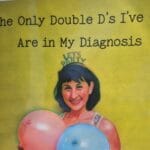
Historically, the awareness of what life is like as a female with ADHD has been limited compared to males. Thankfully, however, there has been an increase in discussion around the topic. While there are similarities between the sexes, there are also some vast differences leading to women often not feeling heard or underrepresented when it comes to both their mental health and overall health. A call for research and awareness must be done to help prevent young women from falling through the cracks because they do not present as the stereotypical ADHD mold. Of course, some females meet the typical criteria of the Diagnostic Statistical Manual of Mental Disorders Fifth Edition, Text Revision (DSM-V-TR), but many do not. I, myself, am one of them. Although my parents and teachers suspected that I might have ADHD, I was doing good enough in school so there was no further intervention. It was not until I became a preteen that I started to struggle with mental health issues like depression and anxiety as well as academic issues. Thankfully, both my parents are pediatric mental health workers, so they wanted to revisit the ADHD concerns. Many young females do not have the same experience that I did and end up going through their teenage years and adulthood without a diagnosis of ADHD. The issue with this is that those females are then at greater risk for developing other mental health issues such as depression, anxiety, substance use issues, gambling, and eating disorders; and they are at greater risk of childhood and adulthood abuse, sexual abuse, suicidal ideation, and poverty. It is important to note that having a diagnosis of ADHD might not prevent these comorbidities or situations from occurring but when someone has more control over their thoughts and understands why they are the way they are then there is an increase in confidence and self-acceptance.
Currently, I work as a school counsellor. I work with many females who I suspect have undiagnosed ADHD and they struggle tremendously with their self-esteem, confidence, and self-acceptance. These students are often comparing themselves to their neurotypical peers and wondering why they are not like them. I am a witness to the consequences to misdiagnosis whether it is with the incorrect diagnosis (such as depression or anxiety) or no one has ever addressed the concerns with a professional with the reminder that ADHD looks different in females. The teachers of these girls often comment that so and so is a ‘space-cadet’ and they never get any work done. While they would never say this to the students the stigma and harm due to these biases are very much there. I feel for these students because it can feel very isolating and lonely when you are made to feel different. The damage from being teased for behaviours that are out of their control may be irreversible. While diagnosis does not result in a cure for ADHD it can provide clarity, treatment, and resources that can help females live happy and successful lives.
So, what can be done to change the way teachers, doctors, and families view ADHD in females. Well, first, we need to continue the discussion of the importance of being aware and understanding that not only does ADHD, but many physical and mental health disorders present differently in females compared to males. Thankfully, this topic has reached social media and while there is a lot of misinformation being spread there is at least discussions being had and females coming forward with their stories. If I could have had the same access to social media that is around today when I was in middle and high school, it might have helped me understand
that I am not the problem, I am not annoying, and it is okay to think and act differently. The next important step that needs to be taken is more research around this topic. As a current graduate student, I am focusing my thesis on improving the assessment process for females with ADHD and including the stories of young adult women who spent their youth suffering from the lack of knowing who they truly were. There is endless research that could be done. From improving the assessment and diagnostic process to revising the current interventions and treatment for ADHD and finding methods that suit females better. Finally, though these are not the only areas that need improvement, educators, families, and even physicians would benefit from knowing the gender differences of ADHD so that young girls do not fall through the cracks or end up with the incorrect diagnosis. Those who end up being treated for depression instead of ADHD may find temporary relief in depression symptoms, but the underlying cause of the depression symptoms may be from years of internalizing behaviours and masking to fit in with the norm.
To wrap things up, if I could go back in time to when I was 13, I would give myself a hug and tell her that things would be okay. I would want her to know that being different is okay. I would warn her that the following years of high school and university might be difficult since we live in a world best suited for neurotypical people, but she will find people who love her for who she is. The importance of bringing more awareness to the mental health and the lives of females with ADHD will allow for more individuals who felt shameful for the person they were as teenagers to forgive themselves for years of wishing they were someone else. As parents, teachers, practitioners, siblings, and friends of girls and women with ADHD who may be reading this, I encourage you to take the time to read and learn more about the gender differences of ADHD and what you can do to help improve the quality of life for these young girls, teenagers, and adult women.

This ADHD Awareness Month, CADDAC is highlighting... Read More

This ADHD Awareness Month, CADDAC is highlighting... Read More

This ADHD Awareness Month, CADDAC is highlighting... Read More

This ADHD Awareness Month, CADDAC is highlighting... Read More

This ADHD Awareness Month, CADDAC is highlighting... Read More